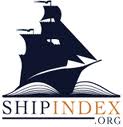Ever looked at the website for ShipIndex.org? This is a fairly new website where you can obtain a photo of the ship your ancestor served aboard or came to America on. Do check it out! Here’s from their recent newsletter (sign up for free):
What kind of content will you find in the database? ShipIndex.org contains citations for vessels mentioned in books, magazines, websites, databases, CD-ROMs, and more. (You can find a complete list of all resources in the database here.) So, if you see a mention of a ship in a book, it means that that vessel is mentioned in that specific book, on that particular page. (If the page number is hotlinked, that indicates that you should be able to see the actual page through Google Books. This doesn’t always work, depending on how much of the book is visible through Google Books, where your computer is physically located [ie, the IP address of your computer – if you’re outside the US, Google generally hides more content than they do for someone inside the US], and several other factors. But it works, most of the time.)
Many – but definitely not all – citations have links that will take you to the full text. If the citation is at an online location, the link will take you right to the entry. Many digitized resources are available this way; we estimate that fully 85% of the citations in the database can take you to full text. On the other hand, sometimes you can’t get to the full text at all, because the book or magazine or CD-ROM isn’t available in Google Books. What do you do then? I firmly believe that knowing a citation exists is 75% of the way to finding the information itself. If you don’t know the citation exists, you’ll of course never find it.
So, once you know the citation exists, there are several things you can do. In most cases, you’ll see a “Find in a library” link on the results page; if you click this link, you’ll be taken to WorldCat, a massive bibliographic database that can be used to tell you which libraries own the books you’re seeking. Enter your location, and it’ll identify the libraries nearest you with that book or resource. You can also click on the AbeBooks.com link to locate a copy of the book to purchase.
Always feel free to contact a librarian for more help if you need it. Good librarians have lots of little tricks for locating copies of books, and most libraries will borrow the book for you from another library for a small fee, or sometimes for free.
What happens when you have an especially common ship name, like Mary? In the premium database, you’ll end up with thousands of citations, and that is, admittedly, a real challenge. The best way to manage this is to look at the complete citations, and see if you can narrow down the content to something that’s more manageable. For instance, if you’re looking for a ship from the era of the US Civil War, it’s a pretty safe assumption that you should ignore citations mentioned in Passenger Lists of Ships Coming to North America, 1607-1825: A Bibliography or The Private Papers of John, Earl of Sandwich, First Lord of the Admiralty, 1771-1782, and you should certainly pay attention to citations in publications like Paul Silverstone’s Civil War Navies, 1855-1883, or Accessible Archives’ Civil War Newspapers collection.
Look at the publication title and also at the citation itself. If the publication title isn’t specific (for example, a journal like Mariners Mirror, or a general title like Ships of the World: An Historical Encyclopedia), the citation might give a lot of useful information. When you see a date, it’s important to remember that that date may refer to almost anything – sometimes it’s the date of vessel launch, sometimes it refers to an event in the vessel’s life, such as a specific voyage or collision or loss, and sometimes it refers to the date of publication of something else – for example, in the Civil War Newspapers collection, dates refer to the year of publication, and may publish a remembrance of an event from many years earlier. The complete notes about the resource will generally tell you more about how to read the citation, and what the year might refer to.
